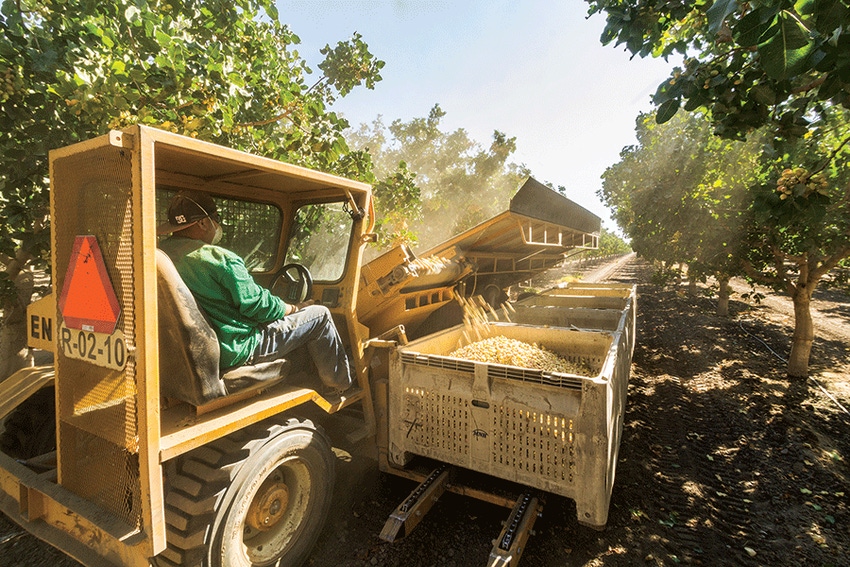
Growers are roughly halfway through a pistachio harvest that could yield as much as 900 million pounds, as most farms are done with their first shake and are starting their second.
“For the most part, they do double shakes,” says Richard Matoian, executive director of the Fresno, Calif.-based American Pistachio Growers. “In rare instances, they can only do a single shake, and in rare instances, they’ll do a triple shake. This year, it looks like pretty much the vast majority will do a double shake.”
Growers have been particularly busy since this year has been an “on” year for the alternate-bearing nut. Earlier in the season, industry leaders had predicted the crop would come in somewhere between 850 million and 950 million pounds, which would give it a good chance of surpassing the record 903 million pounds produced in 2016. Last year’s crop was only 605 million pounds.
The industry’s expectations for this season have since been tempered — but only a little. “We could be close to the record, but it doesn’t look like we’re going to exceed it,” Matoian says.
Growers mostly wrapped up their first pass through orchards last week, shaking trees lightly enough that only mature pistachios would fall. Farms have been reporting smaller nuts overall, perhaps partly because of weather and partly because of the large size of the crop. “When you have a large crop, not all of the fruit will end up sizing up to the larger sizes,” he says.
INSECT DAMAGE MINIMAL
The good news is that the one issue that diminished last year’s crop — damage from navel orangeworm and other insects — has so far been minimal in 2018, Matoian says. “This year thus far has been incredibly clean. Many loads going in have had either zero insect damage or less than one-half of 1 percent, which has been great. Last year at this time we were seeing numbers that could be as high as 4 percent or 5 percent.”
Some growers’ customers do request larger-size nuts, which are not as available in the quantities they want, but growers have “more than made up for it by having enough volume,” he says.
The initial price processors guaranteed to growers was similar to last year ± from $1.65 to $1.80 per in-shell pound. But that will likely go up via a negotiated “marketing bonus” at season’s end. The marketing bonus in some years has added as much as one-third to the price, Matoian says.
“The quality is very good thus far as well, so that’s another factor we’re looking at. The most significant factor right now is that it’s a very large crop, similar to 2016, with incredibly low insect damage from navel orangeworms. I think growers really heeded the advice of winter sanitation and a combination of proper insecticide use and puffers for mating disruption.”
About the Author(s)
You May Also Like






